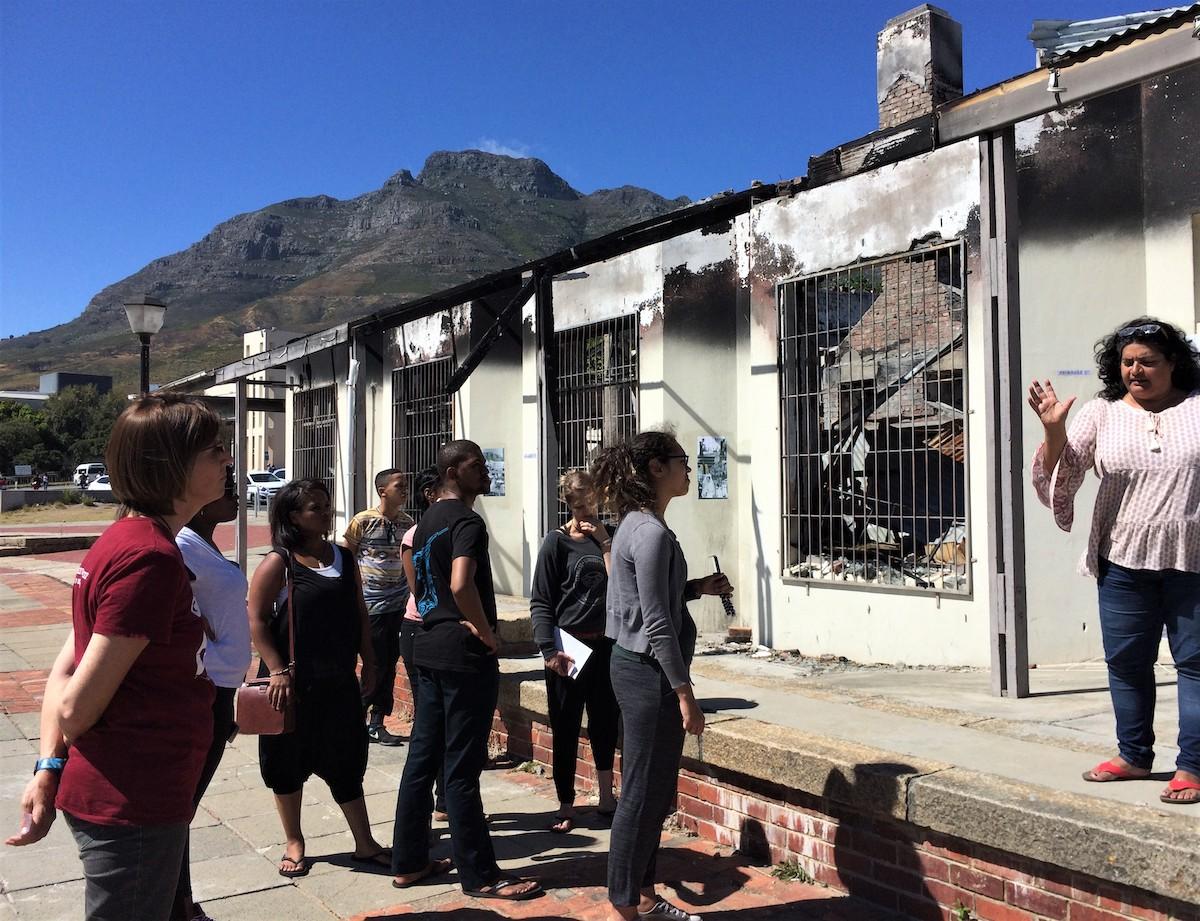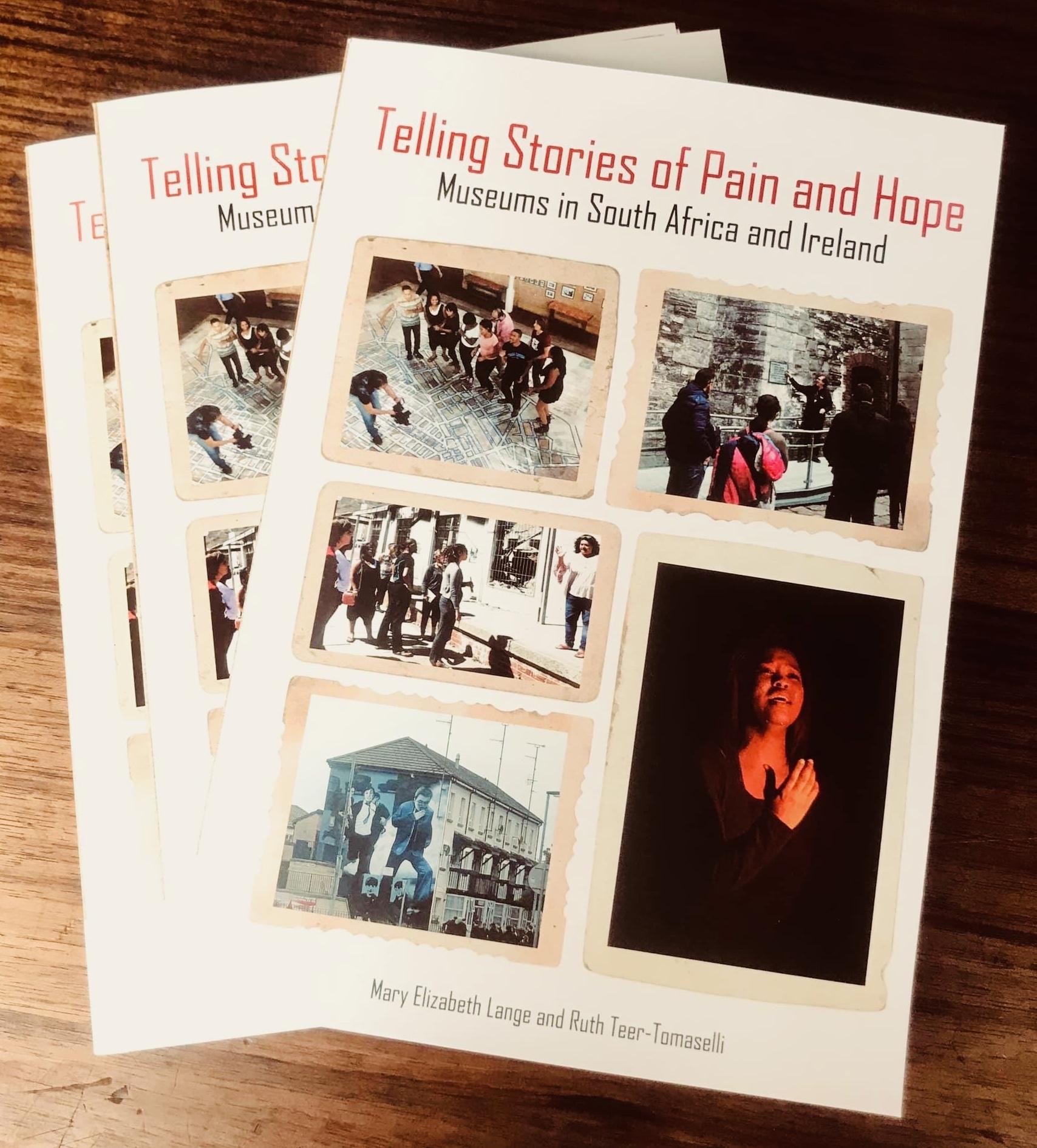
Parallel experiences and narratives in the histories of South Africa and of Ireland, and the ways in which the stories of pain and of hope are shared by storytellers who guide visitors in museums and heritage sites in each context, make for an important and timely comparison. The authors reflect, in the closing pages of this book, on the relevance of museums in the twenty-first century. They point to the key role of inclusive storytelling which serves as a form of contemporary activism which enhances a recognition of common humanity (for museum staff and visitors alike) through the telling of multiple (recent and distant) experiences of trauma and healing.
Book Covers
The storyteller guides who share their often direct and personal experiences of difficult histories – of ‘the Struggle’ or ‘the Troubles’ – are engaged throughout the book in situations of participant observation, interviews and questionnaires or other written contributions, to explore their perspectives on a variety of themes. Two of these, in central chapters, are about their ‘Connecting’ – to ‘Environment: physical and spiritual’ and to ‘Self: agency and affirmation’. The guides make the connections both for themselves and for the visitors being guided. In the chapter following, respective ontological groundings in a spectrum of belief systems, religious persuasions and causes are considered in relation to trauma, healing, and hope, with the cry of ‘never again!’ Working with memory and the present, one of the participants quoted observes that, ‘what you do now is how you impact the future’.
Established at the outset is the idea that we are all, as individuals, ‘living museums’, carrying intangible memories as well as the more tangible aspects such as our names, our adornment, physical features and more. It is through people – primarily the storyteller guides, who are introduced in one of the opening chapters, their voices threading throughout – that museums evolve as places of storytelling and spiritual wellbeing.
The approach of the authors is autoethnographic – with this autoethnographic methodology and perspective coming across also in the contributions of the study participants in South Africa and Ireland. Both authors, we learn, have family roots in Ireland, but were both born and grew up in South Africa: their religious background, Protestant Methodist and Catholic respectively, would have been of greater consequence in the one context, but was much less significant in the other. In their writing there are recollections of a range of personal life experiences, foregrounded alongside similar kinds of details from the lives of storyteller guides in respective countries and museums. The book recounts in-depth research about, and visits to, some forty museums in Northern Ireland, the Republic of Ireland and South Africa. The museums are chosen for the kinds of narratives they reflect relative to the conflicts and tensions that constitute the histories in question, and there are maps in the opening pages that indicate where each one is situated. There is also a summary timeline for both Ireland and South Africa, running from prehistory to pandemic, and highlighting the episodes and events that seem to echo one another in each place. These are not, for the most part, concurrent, and may be connected in only convoluted ways; but with the rising tensions through the middle of the twentieth century, the unfolding conflicts from Sharpeville to Soweto fall strikingly into step with those of Bogside to Bloody Sunday. In terms of the timeline, reflections at the book’s closing consider the impacts of Covid19 on museums in both regions and, crucially, on the storytellers, and suggest post-pandemic adjustments and future prospects.
Tourists at Kilmainham Gaol East wing Dublin Ireland (Ruth Teer-Tomaselli)
The argument flows through opening chapters on People (storytellers, authors) and Museums (pointing out inter alia the shift in focus from depicting typologies and progress, to museums as agents for change). The following chapters explore in detail the Places and Spaces in South Africa and Ireland respectively, introducing individual museums, themes, and the deep histories culminating in the later twentieth century ‘struggles’ and ‘troubles’. This provides the background for the chapters mentioned above, on the work of Connecting, on Beliefs and healing, and a final consideration of Sustainability, on challenges and suggestions including training and the drawing in of storyteller guides from younger generations.
Tighter editing in places might have enhanced the book; and a few of the in-text references (e.g. McKeiver, 2007; Ward, 2018) are not listed in the bibliography.
All in all, this book is a novel engagement with the analogous experiences of communities and of individuals-become-storytellers in museums, against the backdrop of colonial occupation, oppression and of conflict flaring up in Ireland and South Africa. The theme of ‘connecting’, central to the book, stands out as a priority and principal role for museums and their story-teller guides in this century. Ours is a world in which, to cite Chimamanda Adichie, the power of the single story has easily prevailed; where one-sided viewpoints that divide humanity are reinforced by digital algorithms; and with virtual realities leaving many people unconnected and ‘unlocated’. It is the difficult multiple stories often originating in pain, as this book shows, that, through hope and healing, and in museums and heritage sites that provide uniquely suitable venues, can restore our common humanity.
David Morris is the Honorary Research Associate, McGregor Museum Kimberley & Affiliated with the School of Humanities, Sol Plaatje University.
The book was published by Unisa Press.

